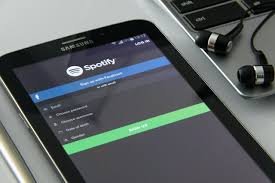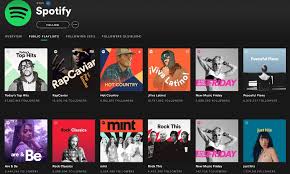Spotify has become the global stage for musicians, with more than 600 million monthly active users as of 2025. For artists, managers, and labels, understanding how a song might perform over time is critical. One of the most common questions is: how do you estimate future streams on Spotify?
Predicting streams is not only about bragging rights. It affects everything from royalty forecasting, marketing budgets, tour planning, and even record label negotiations. With the right tools, data, and methods, you can make informed predictions instead of guesses.

Why Estimating Future Spotify Streams Matters
Streaming revenue accounts for more than 65% of total global music revenue (IFPI, 2024). Spotify alone paid over $9 billion in royalties to rights holders in 2023. For artists, streams translate directly into income.
Here’s why learning how to estimate future streams on Spotify is essential:
Financial planning – Artists and managers can forecast monthly or yearly income.
Marketing ROI – Labels can decide how much to invest in ads or playlist pitching.
Tour scheduling – Popular tracks can signal where an artist should tour.
Negotiations – Stream projections can strengthen leverage in deals with labels or publishers.
Core Factors That Drive Spotify Streams
To estimate future streams, you must understand the factors that shape them:
Release strategy: Singles vs. albums, timing, and frequency of releases.
Playlist placements: Being featured on editorial playlists like New Music Friday or algorithmic ones like Discover Weekly.
Listener retention: The average number of times a listener returns to a track.
Viral triggers: TikTok trends, sync placements, or influencer shares.
Geography: A song trending in one market may expand globally with time.
Spotify’s algorithm rewards songs that achieve high skip rates (low), repeat plays (high), and strong save-to-stream ratios, so these behavioral signals are crucial when projecting future performance.
Methods to Estimate Future Spotify Streams
There is no single formula, but here are the most practical methods professionals use:
1. Trend Extrapolation (Linear Growth)
If a track is currently earning 50,000 streams per day, you can project future streams by extending that daily average over weeks or months.
Example:
50,000 daily streams x 30 days = 1.5 million streams per month
If growth is consistent, in 12 months = 18 million streams
This method works best for tracks with stable performance (e.g., steady playlist support).
2. Decay Models (Realistic Drop-Off)
Most songs peak within the first 30 to 60 days of release and then decline. Analysts often apply a 50% drop rate per month after peak exposure.
Example:
Month 1: 3 million streams
Month 2: 1.5 million
Month 3: 750,000
Month 4: 375,000
This reflects a natural decline unless boosted by new marketing or playlist adds.
3. Playlist Analysis
Tools like Chartmetric, Soundcharts, or SpotOnTrack help track playlist placements. If a song lands in a playlist with 1 million followers, historical data suggests about 1-3% of followers stream weekly, which helps forecast added volume.
4. Social Media Impact Projections
Virality plays a huge role. TikTok-driven hits often sustain 10x more streams compared to non-viral tracks. Monitoring hashtags, usage in reels, and influencer adoption provides predictive insights.
5. Historical Artist Data
Looking at past releases is one of the most accurate ways. If an artist’s last single reached 20 million streams in a year, the new release under similar conditions may achieve a comparable number—unless marketing strategy changes drastically.
Real Example: Estimating Streams for a Mid-Level Artist
Let’s say an indie-pop artist releases a new track. Here’s how projections might look:
Day 1 performance: 100,000 streams (from existing fans + editorial playlist)
First week average: 60,000/day = 420,000 total
Drop-off rate: 20% per week without new playlist boosts
Estimated 3-month trajectory:
Month 1: 1.5M
Month 2: 1.1M
Month 3: 800K
Total (90 days): ~3.4 million streams
If TikTok virality occurs, this could spike to 10–15 million streams within the same period.
Tools That Help Estimate Spotify Streams
If you’re serious about forecasting, you’ll need professional tools:
Spotify for Artists (Free): Provides real-time analytics on listeners, saves, and demographics.
Chartmetric (Paid): Tracks playlist performance, follower growth, and cross-platform data.
Soundcharts (Paid): Focused on radio, streaming, and social media integration.
Viberate (Paid): A data-driven platform offering predictive insights.
Spotify Royalty Calculator (Third-Party): Helps convert projected streams into revenue estimates.
Converting Streams into Revenue
Knowing how to estimate future streams on Spotify is useful, but understanding earnings makes it even more valuable.
Spotify pays between $0.003 and $0.005 per stream on average.
1 million streams = ~$4,000 (average payout)
10 million streams = ~$40,000
100 million streams = ~$400,000
Therefore, predicting streams is directly tied to revenue projections, making accuracy crucial for planning.
Limitations in Estimating Future Streams
No model is perfect. Some key challenges include:
Algorithm unpredictability – Spotify may change playlisting priorities.
Market shifts – Emerging platforms like TikTok or YouTube Shorts may steal attention.
External boosts – TV placements, viral memes, or celebrity endorsements can spike numbers unexpectedly.
Listener fatigue – Repetition of genre trends may shorten a track’s life cycle.
This is why professionals often create best-case, worst-case, and expected-case scenarios when projecting streams.
FAQs about Estimating Future Spotify Streams
Q: Can small indie artists estimate future streams?
A: Yes, by using early-day streaming numbers, playlist adds, and engagement rates, even independent artists can forecast performance.
Q: How far into the future can you project?
A: Typically, 3 to 12 months is reasonable. Longer than that introduces too much uncertainty.
Q: Do playlist followers equal guaranteed streams?
A: Not exactly. Engagement varies, and only about 1–3% of playlist followers actually stream a new track weekly.
Q: Are Spotify projections reliable for investors?
A: Labels and rights holders often rely on projections for royalty-backed investments, but they factor in risk adjustments.
Conclusion
Learning how to estimate future streams on Spotify is both an art and a science. By combining trend analysis, playlist monitoring, social media data, and historical performance, artists and labels can forecast with reasonable accuracy. While no method is foolproof, projections are vital for planning careers, negotiating deals, and maximizing revenue.
For artists, the key is to monitor early performance closely and adjust marketing efforts in real time. With data-driven strategies, you can not only predict streams but also influence them.







